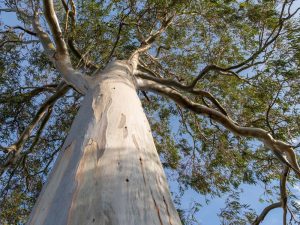Last Updated on July 15, 2024 by teamobn

Making a gorgeous and flourishing fishbowl with plants is a fun way to welcome a little bit of nature inside your house. A planted fishbowl, unlike a conventional fish tank, provides a small yet lively habitat in which fish and plants live in harmony. In addition to adding to the aesthetic appeal, the rich vegetation gives your aquatic pets vital advantages including oxygenation and water filtration. Keeping your fishbowl’s environment healthy requires selecting the proper plants.
In this post, we’ll examine the best 5 plants for planted fishbowls to provide your fish with a healthy environment and visual appeal.
Top 5 Plants for a Planted Fishbowl
Contents
Anubias Nana
Anubias Nana is a popular choice for planted fishbowls due to its hardy nature and striking appearance. This plant features broad, dark green leaves that add a touch of elegance to any aquatic setup.
Anubias Nana is known for its slow growth rate, making it ideal for smaller environments like fishbowls where space is limited. Its compact size ensures it doesn’t overwhelm the bowl while still providing ample coverage and hiding spots for fish.
One of the key benefits of Anubias Nana is its minimal care requirements. This plant thrives in low to moderate light conditions, which means it can adapt well to the lighting typically available in a fishbowl setup.
Additionally, it does not require any special substrate to grow, as it can be attached to rocks, driftwood, or other decorations. This versatility allows for creative aquascaping, enhancing both the aesthetic appeal and the functionality of the fishbowl.
Besides its visual and practical benefits, Anubias Nana also contributes to the overall health of the aquatic environment. It helps to improve water quality by absorbing nitrates and providing oxygen through photosynthesis.
This not only creates a healthier habitat for your fish but also reduces the need for frequent water changes. With its combination of beauty, ease of care, and ecological benefits, Anubias Nana is an excellent addition to any planted fishbowl.

Java Moss
Another great option for a planted fishbowl is java moss, which is versatile and has a lush, green look. This plant can grow on rocks, driftwood, and even the substrate, making it a very flexible choice for aquascaping. Its thin, feathery texture gives a natural appearance and forms a dense covering that can act as a fish hiding spot and a home for helpful microbes.
Low maintenance needs of Java Moss are among its most alluring features. Since it tolerates low light levels and grows in a variety of water conditions, it is appropriate for fish tanks with little lighting. Grown without the need for specific substrate or fertilizers, java moss is readily adhered to surfaces with aquarium-safe glue or fishing line. It’s therefore a terrific option for both novices and seasoned aquarists.
Beyond its beauty, Java Moss has a number of ecological advantages. It traps trash and gives good bacteria a surface on which to grow, therefore enhancing the quality of the water. Because these bacteria help to break down waste, your fish will live in a healthier environment.
Because they may graze on the microorganisms that grow within the moss, java moss also offers fish and invertebrates a natural food supply. A useful addition to any aquatic arrangement, Java Moss improves the health and attractiveness of a planted fishbowl.
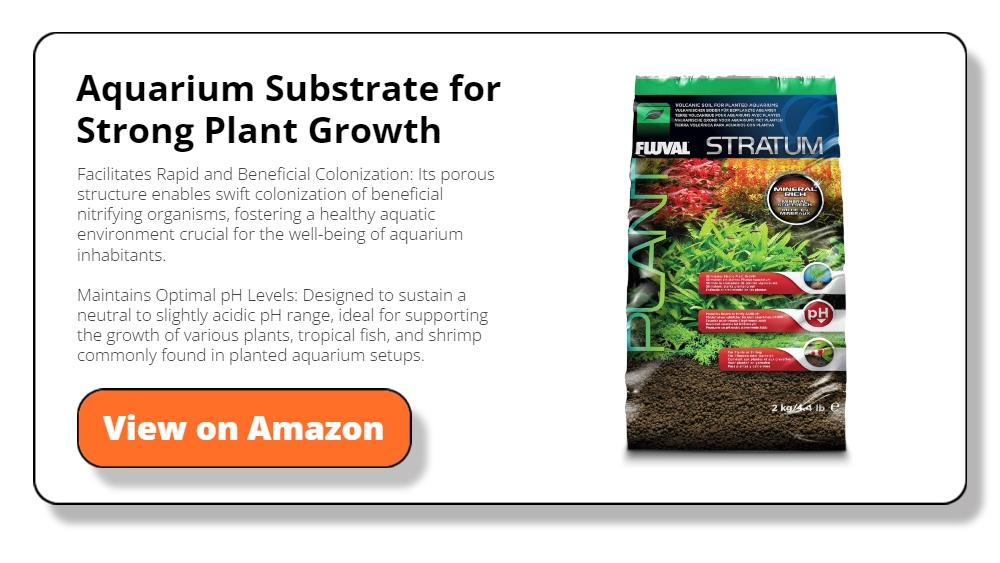
Java Fern
Java Fern is a favorite among aquarists for its hardy nature and attractive, unique foliage. This plant features long, arching leaves that can add a dramatic and lush look to any planted fishbowl. Unlike many aquatic plants, Java Fern doesn’t require substrate for its roots.
It thrives when attached to rocks or driftwood, which makes it perfect for creating vertical or suspended displays within your fishbowl. This adaptability allows for a variety of creative aquascaping possibilities, enhancing the visual depth and complexity of your aquatic environment.
Java Fern is especially popular for its low maintenance needs. It can flourish in low to moderate light conditions, typical of a planted fishbowl setup, and does not demand high levels of nutrients or CO2 supplementation. This makes it an ideal choice for those who prefer a simple, easy-to-care-for aquatic plant.
Even beginners can enjoy the beauty and benefits of Java Fern without the need for intricate care routines. Simply secure it to a stable surface, and it will gradually anchor itself, creating a stable and enduring element in your fishbowl.
Beyond its aesthetic appeal, Java Fern plays a crucial role in maintaining a healthy ecosystem within a planted fishbowl. Its leaves provide a natural habitat for beneficial bacteria that help break down waste products, improving water quality.
Additionally, the plant’s broad leaves offer excellent cover for fish, reducing stress and creating a more natural and comfortable environment. Whether you’re new to keeping aquatic plants or an experienced hobbyist, Java Fern is a reliable and beautiful choice for enhancing your planted fishbowl.
Dwarf Hairgrass
Dwarf Hairgrass is an excellent choice for those looking to create a lush, carpet-like effect in their planted fishbowl. This plant features thin, grass-like blades that can spread across the substrate, forming a dense, green carpet. Its ability to cover the bottom of the bowl with a vibrant green layer adds a natural and inviting look to your aquatic setup. Dwarf Hairgrass is ideal for creating a serene, meadow-like environment that both you and your fish will appreciate.
This plant thrives in well-lit environments, making it suitable for fishbowls that receive moderate to high lighting. While Dwarf Hairgrass can be a bit more demanding than other plants in terms of light and nutrient requirements, its stunning appearance is well worth the effort.
Regular trimming is essential to keep it looking tidy and to prevent it from overshadowing other plants in the bowl. With proper care, Dwarf Hairgrass will reward you with a beautifully textured and healthy planted fishbowl.
In addition to its aesthetic benefits, Dwarf Hairgrass also contributes significantly to the ecological balance of a planted fishbowl. Its dense growth helps prevent the build-up of detritus by trapping particles in its blades, which can be easily removed during maintenance.
This, in turn, helps maintain clearer water and reduces the overall bioload in the bowl. The plant’s extensive root system also aids in stabilizing the substrate, providing a more secure and natural environment for your fish. Dwarf Hairgrass is a fantastic option for those seeking to combine beauty with functionality in their planted fishbowl.
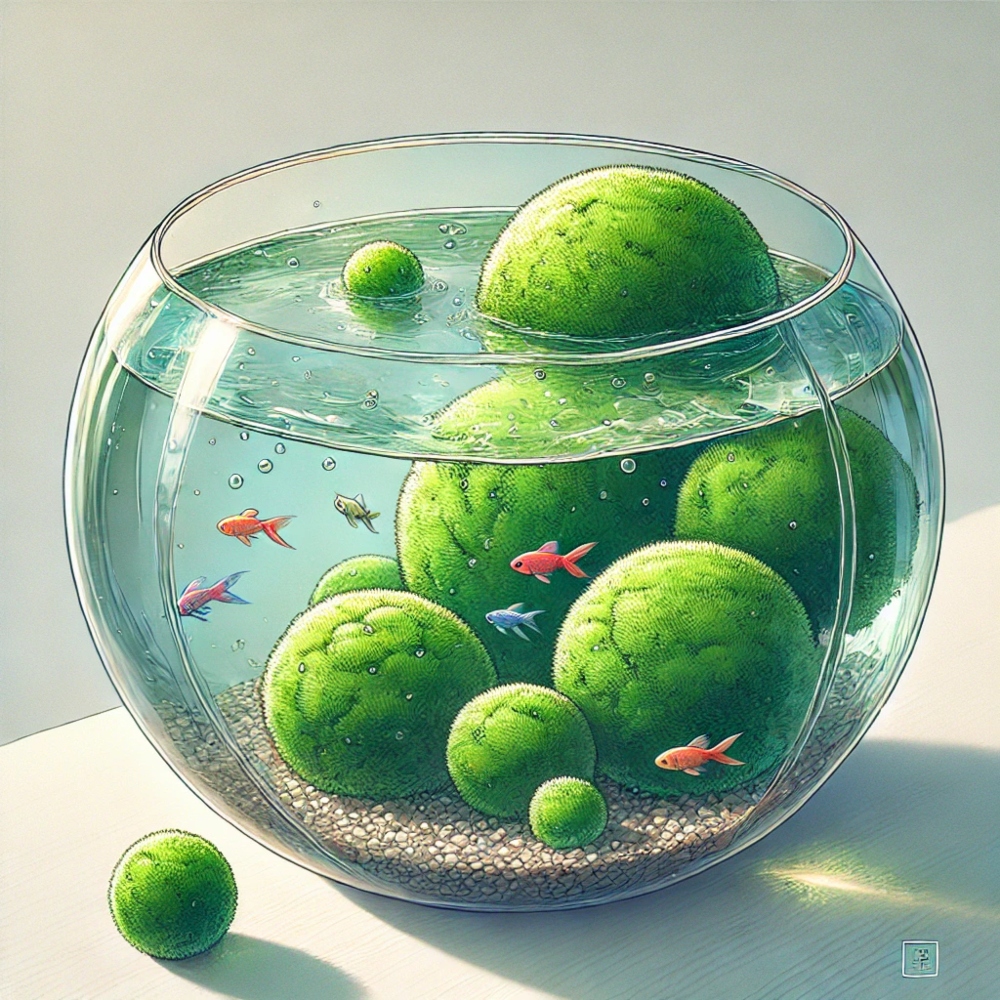
Marimo Moss Balls
Marimo Moss Balls are a unique and delightful addition to any planted fishbowl. Unlike traditional aquatic plants, these spherical algae formations offer a distinctive aesthetic with their soft, velvety texture and deep green color.
Marimo Moss Balls are incredibly versatile and can be placed directly on the substrate or allowed to float freely in the bowl, adding an intriguing element to your aquatic design. Their simple, compact form makes them an ideal choice for small or minimalist setups where space and maintenance are considerations.
Caring for Marimo Moss Balls is straightforward, making them perfect for beginners and seasoned aquarists alike. They thrive in low to moderate light and require minimal upkeep. Periodically rolling the moss balls helps maintain their shape and ensures even growth.
They also benefit from occasional rinsing and gentle squeezing to remove any debris that might accumulate on their surface. This ease of care makes Marimo Moss Balls an attractive option for those looking to enhance their planted fishbowl without a significant time commitment.
Ecologically, Marimo Moss Balls provide several benefits to a planted fishbowl. They contribute to water quality by absorbing nitrates and other pollutants, which helps to keep the environment cleaner for your fish. Additionally, their unique structure offers a fun and interactive element for fish to explore and play with, enriching their habitat.
Marimo Moss Balls also serve as a surface for beneficial bacteria to colonize, aiding in the biological filtration of the water. With their charming appearance and practical benefits, Marimo Moss Balls are a delightful and functional addition to any planted fishbowl.
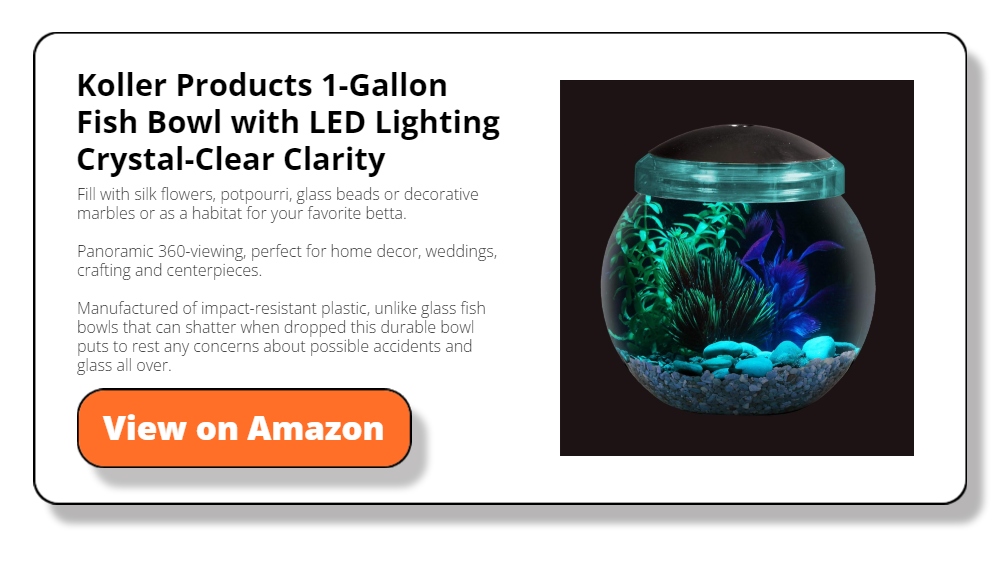
Benefits of a Planted Fishbowl
Not only is a planted fishbowl a lovely addition to your home decor. It is a small-scale ecosystem in which fish and plants coexist to produce a balanced and healthy atmosphere. Your fishbowl will look better and your aquatic friends will be healthier when live plants are included. The main benefits of keeping a planted fishbowl are listed here.
Enhanced Water Quality
Enhancing water quality in a fishbowl is mostly dependent on live plants. From fish waste and leftover food, they take up dangerous substances like ammonia and nitrates. The frequency of necessary water changes is decreased and the water is kept cleaner by this natural filtration process. Through photosynthesis, which is crucial for the health of your fish, plants also help to oxygenate the water.
Natural Habitat and Stress Reduction
Living plants give your fish a more comfortable and natural habitat in their dish. Fish can feel more safe and stress levels can be much reduced when there are plants around. Smaller fish, which do well in settings with lots of cover, particularly need this. Because a planted fishbowl resembles their original environment, it encourages natural behaviours and enhances their general health. The plants’ soothing visual appeal also adds to the general tranquilly of your area.
Aesthetic Appeal and Versatility
A planted fishbowl can be a stunning focal point in any room, adding a touch of nature and tranquility. The vibrant greens and varied textures of aquatic plants can transform a simple bowl into a captivating underwater garden. This not only enhances the visual appeal but also offers endless opportunities for creative aquascaping. Whether you prefer a minimalist setup with a few carefully placed plants or a lush, dense arrangement, a planted fishbowl allows you to express your artistic vision while creating a thriving aquatic environment.
Integrating live plants into your fishbowl brings multiple benefits that go beyond mere decoration. From improving water quality to providing a natural habitat for fish, and adding a unique aesthetic touch, a planted fishbowl is a rewarding choice for any aquarist.
Tips for Maintaining a Healthy Planted Fishbowl
Keeping a planted fishbowl healthy requires a balance of proper care and regular maintenance. While these mini ecosystems are relatively easy to manage, following a few key practices will help ensure that both your plants and fish thrive. Here are some essential tips for maintaining a beautiful and healthy planted fishbowl.
Regular Maintenance and Trimming
To keep your planted fishbowl looking its best and functioning well, regular maintenance is crucial. This includes trimming overgrown plants to prevent them from dominating the bowl and overshadowing other plants.
Regularly remove any dead or decaying plant matter to avoid fouling the water and to keep the environment clean. This practice not only maintains the aesthetic appeal but also promotes healthy plant growth by preventing unnecessary competition for light and nutrients.
Balancing Plant and Fish Needs
Achieving a harmonious balance between the needs of your plants and fish is key to maintaining a healthy planted fishbowl. Ensure that the number and type of plants are appropriate for the size of your bowl and the species of fish you have.
Overcrowding can lead to poor water quality and stress for both plants and fish. It’s important to choose plants that are compatible with your fish’s behavior and dietary habits. Some fish might nibble on delicate plants, so selecting hardy species that can withstand such activity is beneficial.
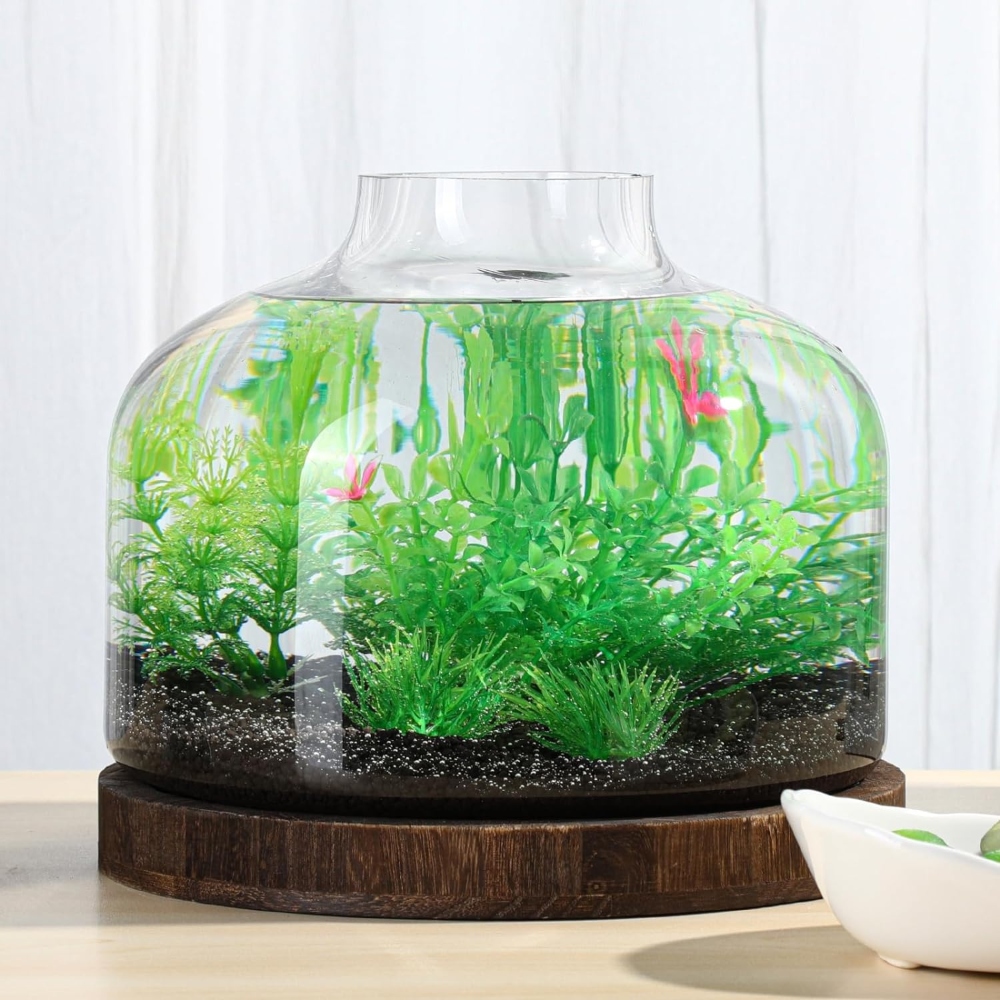
Monitoring Water Parameters and Light Levels
Maintaining stable water conditions is vital for the health of both plants and fish in your bowl. Regularly check the water parameters, including pH, temperature, and hardness, to ensure they remain within the optimal range for your chosen plants and fish. Frequent partial water changes help maintain water quality by removing accumulated toxins and replenishing essential minerals.
Additionally, ensure that your bowl receives the right amount of light. Most aquatic plants require adequate light for photosynthesis, but too much light can lead to algae growth. Adjust the lighting duration and intensity based on the needs of your specific plants.
Feeding and Fertilization
While fish waste provides some nutrients for plants, additional fertilization can be beneficial for a thriving planted fishbowl. Use aquarium-safe fertilizers that supply essential nutrients like nitrogen, phosphorus, and potassium, which might be lacking in the water.
Be cautious not to over-fertilize, as this can lead to nutrient imbalances and algae problems. Also, be mindful of your fish’s feeding schedule and avoid overfeeding, as excess food can decompose and deteriorate water quality.
Maintaining the Bowl’s Aesthetic
Keeping your planted fishbowl attractive involves periodic cleaning of the glass and decorations to remove algae buildup. Use a soft brush or cloth to gently clean the surfaces without disturbing the plants and fish.
Regularly rearranging or rotating decorations can also keep the environment fresh and interesting for both you and your aquatic pets. Pay attention to the overall layout and make adjustments as needed to maintain a balanced and visually pleasing aquascape.
Using the Right Substrate
Choosing the appropriate substrate is essential for the health of your plants. While some plants can thrive without a substrate, many benefit from a nutrient-rich base that supports root development.
Consider using a specialized plant substrate that provides essential nutrients and helps anchor the plants firmly. Avoid using sharp or overly coarse materials that could harm your fish or plant roots. A well-chosen substrate can enhance the growth and stability of your plants, contributing to a healthier planted fishbowl.
Ensuring Proper Water Circulation
Proper water circulation is crucial in a planted fishbowl to prevent stagnant areas and to ensure even distribution of nutrients and oxygen. Using a small, gentle air stone or a low-flow filter can help create a consistent water movement without disturbing your plants or fish.
This gentle flow aids in keeping the water clean and oxygenated, promoting the overall health of your aquatic ecosystem. Ensure that the flow is not too strong, as it can uproot delicate plants or stress your fish.
Introducing Beneficial Microorganisms
A healthy planted fishbowl benefits greatly from the presence of beneficial microorganisms. These bacteria and other tiny organisms play a vital role in breaking down waste products and maintaining water quality.
You can introduce these microorganisms by using bacterial supplements available for aquariums. Regularly adding these supplements can help establish and maintain a stable biological filter, reducing the levels of harmful substances and promoting a healthier environment for your fish and plants.
Controlling Algae Growth
Algae can be a common issue in planted fishbowls, often resulting from excess nutrients or light. To manage algae growth, consider introducing algae-eating species, such as snails or shrimp, which can naturally control algae levels.
Additionally, monitor and adjust the light exposure to prevent overgrowth. You can also use aquarium-safe algae control solutions if needed. Regular cleaning and balanced feeding routines will further help in keeping algae under control, ensuring a clear and attractive fishbowl.
Observing Fish and Plant Health
Regular observation of your fish and plants is key to catching potential problems early. Look for signs of stress or disease in your fish, such as unusual behavior, discoloration, or spots. Similarly, check your plants for signs of deficiency or decay, like yellowing leaves or stunted growth.
Promptly addressing these issues, whether through water parameter adjustments, medication, or nutrient supplementation, can prevent them from escalating. Maintaining a close watch on the health of your bowl’s inhabitants is crucial for long-term success.
Adjusting for Seasonal Changes
Seasonal changes can affect the conditions within your planted fishbowl. Changes in room temperature or natural light exposure can impact water temperature and plant growth. Be prepared to adjust your care routines accordingly.
In cooler months, you might need to use a small aquarium heater to maintain stable water temperatures, while in warmer months, monitoring and controlling light exposure can prevent overheating and algae blooms. Being adaptable to seasonal variations will help you maintain a consistent and healthy environment.
These tips will help you maintain a healthy and vibrant planted fishbowl. With proper care, your bowl will remain a beautiful, thriving ecosystem that provides a serene and natural environment for your fish and a delightful display for you to enjoy.
Conclusion
Choosing the right plants for your planted fishbowl can transform it into a vibrant and healthy ecosystem. Anubias Nana, Java Moss, Java Fern, Dwarf Hairgrass, and Marimo Moss Balls each offer unique benefits and beauty, enhancing both the environment and the well-being of your fish. With their diverse qualities and easy care requirements, these plants are perfect for creating a stunning and balanced aquatic display.

